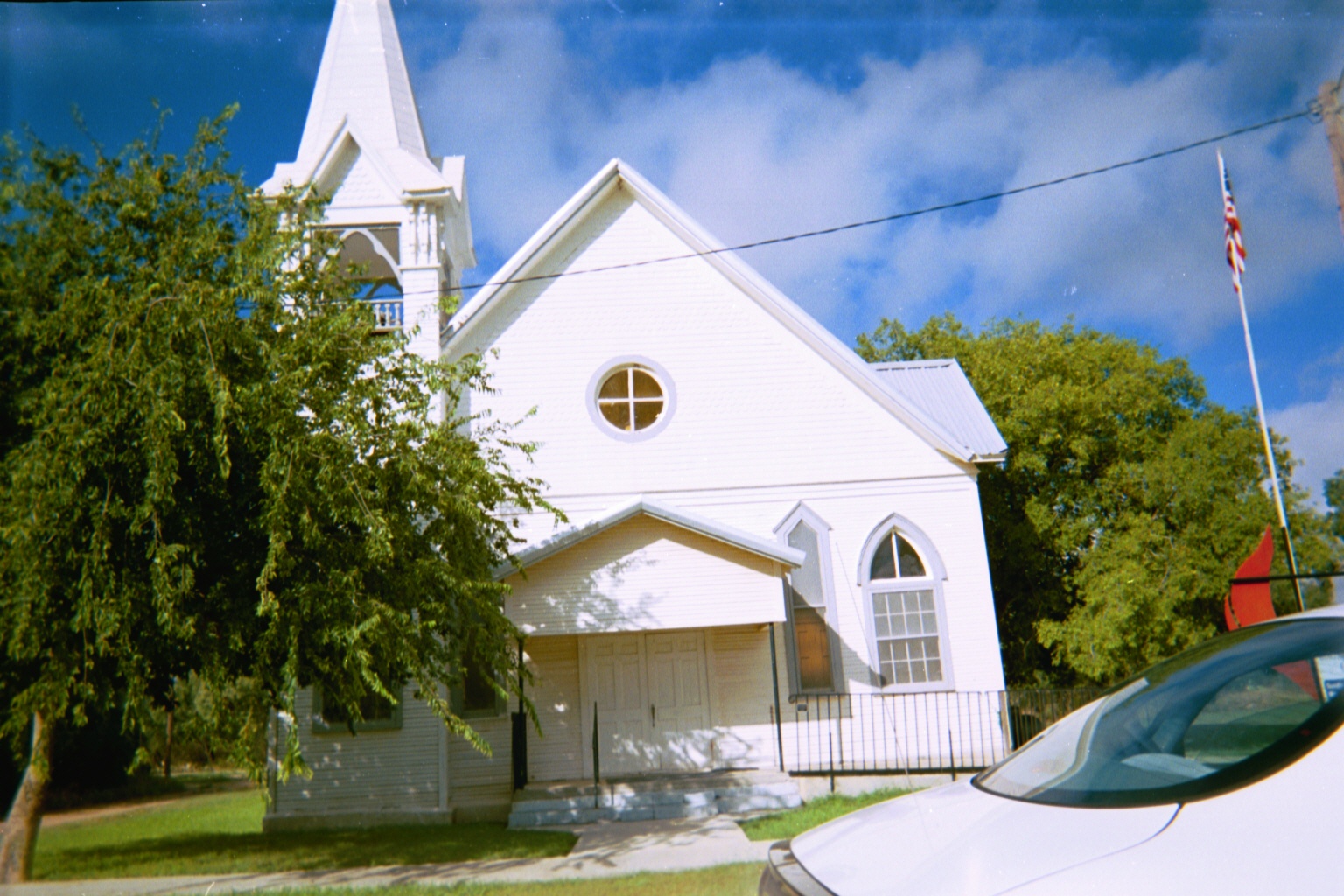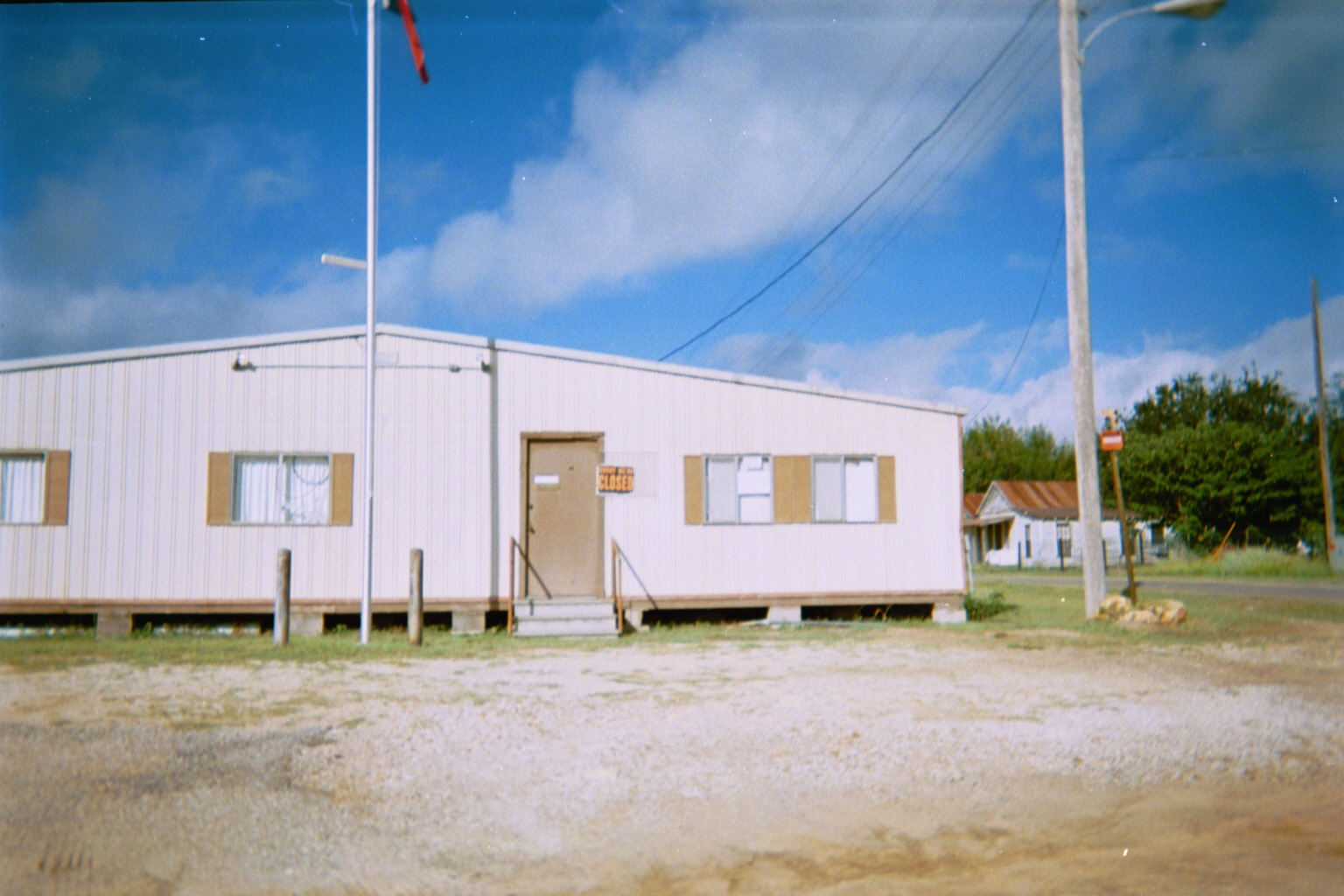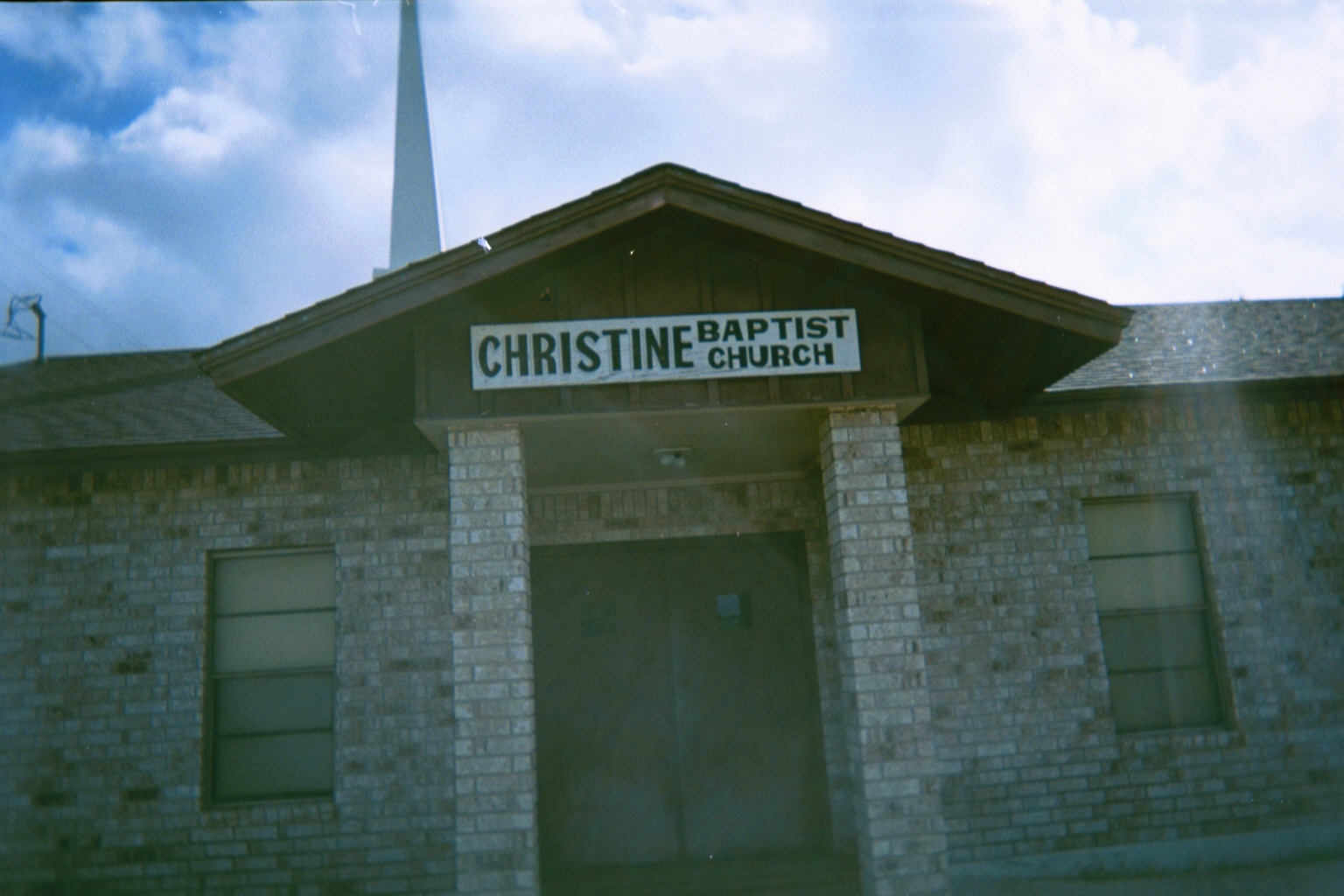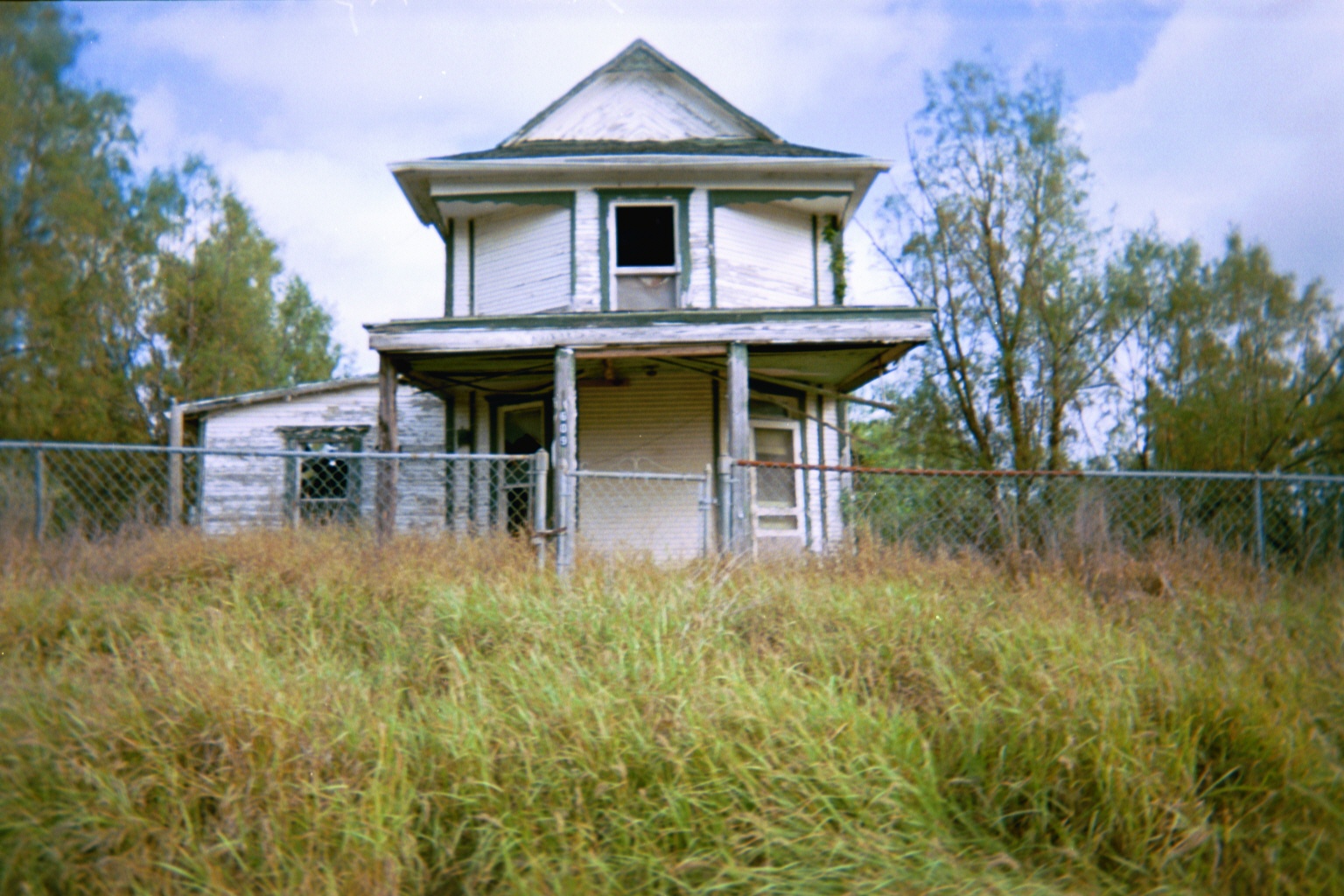

| Shannon Vega | Fall, 2005 |
| U.S. History 1302 | R. Hines, Instructor |
 ORIGINS and FOUNDING FATHERS
ORIGINS and FOUNDING FATHERS
 Imogene was taken out of the railroad's path and never flourished. Christine, on the other hand, boomed into a city.
Imogene was taken out of the railroad's path and never flourished. Christine, on the other hand, boomed into a city.
ECONOMY

HISTORICALLY SIGNIFICANT STORIES

HISTORICAL LANDMARKS:

CONNECTIONS TO COURSE THEMES:
CONCLUSION
SV=Shannon Vega
RH=Ruby Howard
SV- What is your full name?
RH- Ruby Mac Howard.
SV- How old are you?
RH- Iím 75 years old.
SV- How long have you resided here in Christine?
RH- Since I was eight years old, thatíll make it 67 years.
SV-Do you know how many people live here?
RH- About 436 I believe.
SV- Do you know who started the town and when abouts?
RH- I believe it was a Dr. Simmons and it was somewhere around 1909.
SV- Do you know his reasons for starting Christine?
RH- The way I understand it, he had about 75,000 acres of land, called ranch-land that he wanted to sell. He sold it as farm lots. He was the person that laid out the town and plotted it.
SV- Was Christine his only town?
RH- The other town called Imogene was about 67 miles north of here but it didnít make it.
SV- What is Christineís economy based on?
RH- Like any other general suburb I guess. We donít have any general resources here so everybody has to go out. There is a coal mine plant south of us where some people from here work.
SV- Any other businesses?
RH- We have one gas station off the main highway and the Post Office too. We have to go to Jourdanton for all of our needs.
SV- Are there any landmarks here?
RH- The Baptist Church could be considered a landmark.
SV Have yaíll kept up with the technology change?
RH- Oh yeah, we have electricity, telephone, water, cable television, computers. I have a computer and go on the internet sometimes. We have been trying to get computers in the city office for community use.
SV- Where do you get your utilities?
RH- The water comes from these water tanks right here in the city. Our electricity comes from different companies surrounding us.
SV-Do you have a library here?
RH- No, but weíve been trying to get one here, but thatís been hard to do.
SV-Do you have a school here?
RH- No. The kids get bused to Jourdanton to go to school. We had a school here but it closed.
SV-What types of religions are present here?
RH- Baptist, Methodist and Catholic.
SV-Can you tell me about the races here?
RH- Itís mostly Hispanic.
SV-What do you do for recreation out here?
RH- Some of us get together and play cards or dominoes. The Baptist church has a music group. We have a 4th of July celebration and a Christmas parade. The church has picnics throughout the year. We also do cattle-roping, big dinners and auctions.
SV-What type of law enforcement do you have?
RH-We have the county constable that does his rounds through here. We are pretty closely watched by state and county.
SV- Why do you stay out here being so far from everything?
RH- I stay out here because I like it.
SV- Do you see yourself staying here?
RH- Oh, Iíll be here until Iím carried off.
SV- Are your sons planning to stay here too?
RH- As far as I know. My youngest son works in the city office.
SV- Is there anything else you would like to add? Anything that you want the internet world to know about Christine?
RH- I donít know how most people feel, but I feel safer being in a small town where everyone knows me. If a strange person is at my doorstep or a strange car is passing by everyone knows. You donít get that from a big city. I just feel safer, which to me means a lot more. For many years I had to drive out of here to go to work. Iíd leave before daylight, but I knew I was being watched over by the law. It has come real close to home on how closely we are watched. One time, I was stranded out on the highway before daylight and when a Deputy came by and noticed it was me he didnít leave until he knew I was OK. That made me feel real good and thatís why I feel safer out here. If I lived out in big city, I would never feel safe, because I wouldnít have that. Everyone knows you here. We are like one big family. We are like a grapevine; we all take care of each other. Neighbors should take care of one another. In the big city nobody wants to get involved and thatís sad.
Shannon- Iím going to go ahead and close this up and I thank you very much for everything.
Ruby- Well. I hope I helped you and you are welcome.
WEBSITES
ANNOTATED BIBLIOGRAPHY:
*Atascosa County Centennial. Atascosa County Centennial 1856-1956. Atascosa County: 1956.
*Atascosa History Committee. Atascosa County History. Pleasanton: Taylor Publishing Company, 1984.
*Blevins, Don. Texas Towns from Abner to Zipperlandville. Lanham: Republic of Texas Press, 2003.
*Christine Community Profile.s.v. ďCHRSTINE, TEXAS,Ē http://www.epodunk.com/cgi-bin/geninfo.php?locindex=261545.
*Christine Texas Detailed Profile.s.v. ďChristine, Texas,Ē http://www.city-data.com/city/Christine-Texas.html
*Davis, Joe Tom. Historic Towns of Texas Volume II. Austin: Eakin Press, 1996.
*Handbook of Texas Online, s.v. ďCHRISTINE, TX,Ē http://www.tshu.utexas.edu/handbook/online/articles/CC/hlc31.html
*Howard, Ruby Mac. Personal Interview. 6 Sept. 2005.


